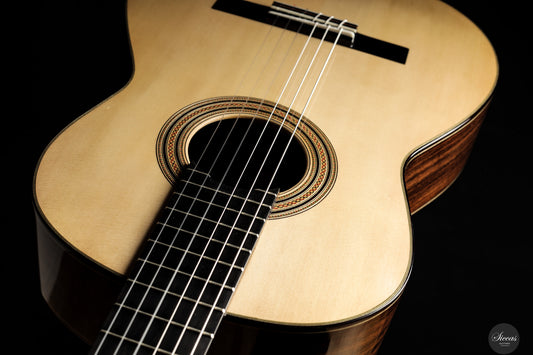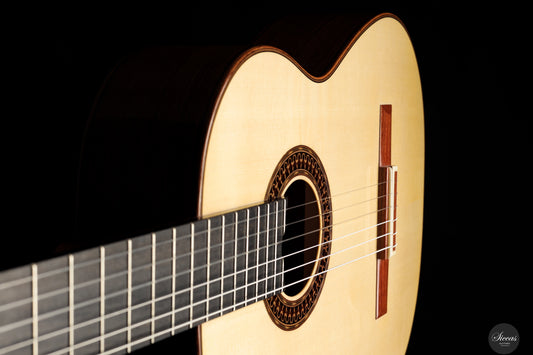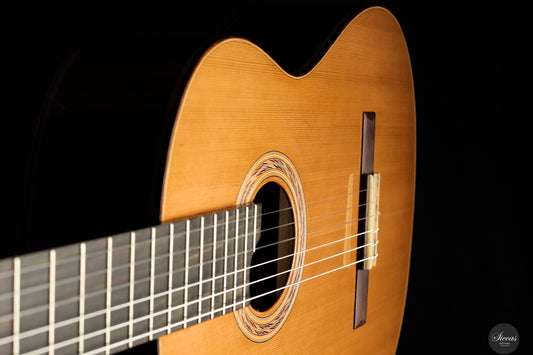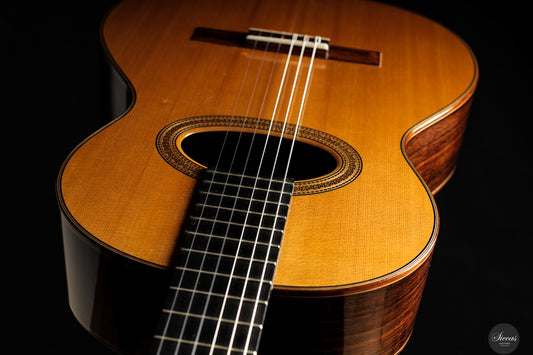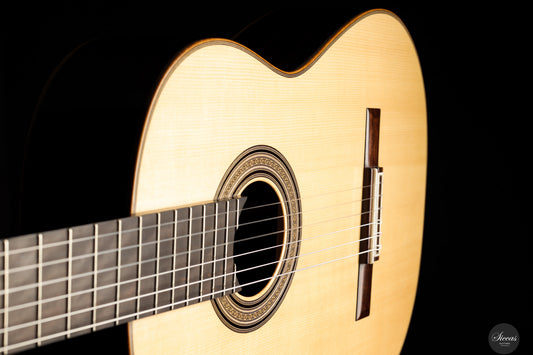
Mastering Gymnopédie No. 1 by Erik Satie on Classical Guitar: A Comprehensive Tutorial by Siccas Guitars
When it comes to translating piano compositions into soulful guitar arrangements, few pieces hold the timeless elegance of Erik Satie's "Gymnopédie No. 1". Originally composed in 1888, this piece embodies simplicity, tranquility, and a melancholic beauty that has captivated audiences for over a century. Thanks to Siccas Guitars and the insightful tutorial by Karlijn, guitar enthusiasts can now explore how to interpret this iconic piano piece on the classical guitar. In this article, we will break down the key elements from Karlijn's tutorial video, provide tips for perfecting your performance, and highlight the best guitar selections for achieving the ideal sound.
Introduction to the Tutorial: Karlijn's Approach
Karlijn, an accomplished guitarist featured on the Siccas Guitars channel, begins the tutorial by expressing her fondness for Erik Satie as one of her favorite piano composers. She emphasizes that "Gymnopédie No. 1" is a highly requested piece among the channel's followers and provides a detailed guide on how to play this composition on the classical guitar.
Choosing the Right Guitar for This Piece
- Performance Section: Karlijn uses a guitar crafted by Karel Dedin. According to her, this guitar's narrow neck design is particularly suited for playing bar chords with ease, which is essential for maintaining smooth transitions throughout the piece.
- Tutorial Section: For the instructional part, Karlijn switches to a guitar made by Dutch luthier Hans van Velzen. She explains that the long sustain of this guitar helps the notes ring beautifully, which is vital for capturing the piece's ethereal quality.
Breaking Down "Gymnopédie No. 1" for Classical Guitar
Originally composed for piano, "Gymnopédie No. 1" presents some unique challenges when arranged for classical guitar. Satie's composition is known for its flowing melody and delicate harmonies, making it essential to focus on tone, sustain, and expression when playing it on guitar.
Key Techniques to Focus On
- Smooth Transitions: One of the essential aspects of playing "Gymnopédie No. 1" on guitar is ensuring fluid transitions between chords. Karlijn demonstrates this using the Karel Dedin guitar, which allows for a comfortable grip, especially when handling bar chords.
- Utilizing Sustain: The long, lingering notes in the piece require a guitar that can provide a rich sustain. Karlijn showcases how the Hans van Velzen guitar's extended resonance supports this aspect, allowing the notes to sing beautifully.
Fingerstyle Tips
- Use of Rest Strokes: For a warm, rounded tone, consider using rest strokes on the melody notes. This technique helps bring out the melody clearly while allowing the harmony to remain soft and subtle.
- Dynamic Control: "Gymnopédie No. 1" relies heavily on dynamics to create its dreamy atmosphere. Practicing with varying levels of touch on the strings will enhance the expressiveness of your performance.
Step-by-Step Guide to Learning "Gymnopédie No. 1" on Guitar
Karlijn's tutorial is structured to guide guitarists through each section of the piece, ensuring that learners can achieve a faithful rendition of Satie's composition. Here's a breakdown of her approach:
Section 1: Introduction and Melody
- Start with the opening melody, focusing on clean finger placement to achieve a soft, rounded tone.
- Pay attention to the natural phrasing of the melody to capture the flowing, almost hypnotic feel of the piece.
Section 2: Harmonizing the Melody
- The middle section introduces subtle harmonies that require smooth transitions between chords. Karlijn demonstrates how to finger these chords efficiently to avoid interrupting the flow.
- For this section, Karlijn recommends using the Karel Dedin guitar due to its ease of play, especially when executing bar chords.
Section 3: Sustain and Expression
- The final section emphasizes letting the notes ring out fully. Using the Hans van Velzen guitar, Karlijn shows how to achieve a rich sustain, giving the music its characteristic serene atmosphere.
- Focus on minimal finger movement to keep the sustain uninterrupted, especially on the bass notes.
Recommended Guitars for Playing Satie's "Gymnopédie No. 1"
The choice of guitar plays a crucial role in how well you can perform this piece. Here are the guitars featured in Karlijn's tutorial:
- Karel Dedin Guitar: Perfect for those who need a narrower neck, especially useful for playing bar chords with comfort and ease. Its balanced tone makes it suitable for pieces that require both precision and warmth.
- Hans van Velzen Guitar: This guitar excels in sustain, allowing for longer, ringing notes that enhance the dreamy atmosphere of "Gymnopédie No. 1". Its rich tonal quality is ideal for pieces that need expressive depth.
Additional Resources and Tips
Karlijn invites viewers to check the video description for links to the sheet music and more details on the guitars used. Additionally, she encourages aspiring guitarists to subscribe to the Siccas Guitars channel for more tutorials and performance videos. Her tutorial is not just a step-by-step guide but also an inspiration for guitarists to explore classical arrangements beyond the standard repertoire.
Practice Suggestions
- Take Your Time: The beauty of "Gymnopédie No. 1" lies in its slow, deliberate pacing. Practice slowly, focusing on each note's sustain and tone.
- Record Yourself: Recording your practice sessions can help you identify areas where you might need to smooth out transitions or improve dynamics.
- Experiment with Different Guitars: As highlighted in the tutorial, different guitars can bring out various nuances in the piece. If possible, try playing the piece on instruments with different neck widths and tonal qualities to find the one that suits your style best.
Conclusion: Capturing the Essence of Satie on Guitar
Karlijn's tutorial on "Gymnopédie No. 1" is an excellent resource for classical guitar enthusiasts looking to expand their repertoire with timeless piano pieces. By choosing the right guitar, focusing on sustain, and mastering smooth chord transitions, you can bring out the full emotional depth of this iconic composition.
Discover More on Siccas Guitars If you're interested in learning more about classical guitar arrangements and tutorials, be sure to visit the Siccas Guitars website and YouTube channel. With expert guides, detailed tutorials, and reviews of high-quality instruments, Siccas Guitars is your go-to source for everything related to classical guitar.






